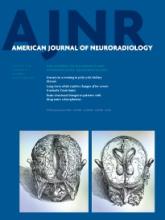Abstract
BACKGROUND AND PURPOSE: Recent studies have shown promising results regarding intracranial aneurysms treated with flow diverters. However, these have had adverse effects, including delayed aneurysm occlusion, posttreatment symptoms, and rupture. The hemodynamic profiles of aneurysms treated with flow diverters were analyzed to determine the ones associated with successful and failed treatments.
MATERIALS AND METHODS: Patient-specific computational fluid dynamics were used to simulate hemodynamic profiles, including the presence of jet flow, energy loss, volume flow, and wall shear stress in 4 successful occlusions of aneurysms and 4 failed cases after flow-diverter deployment. In these 4 failed cases, hemodynamic profiles were examined again after a hypothetic second intervention. This involved replacing the failed flow diverter with a hypothetic optimally deployed flow diverter or simulated placement of a second flow diverter within the first (double hypothetic optimally deployed).
RESULTS: Where successful occlusions were achieved, a marked obliteration of jet flow was observed. Flow entering the aneurysm sac was diverted via the center of the flow diverter and joined smoothly with the continuation of flow leaving the aneurysm sac into the parent arteries. These observations were supplemented by a reduction in the other hemodynamic profiles. Aneurysm neck geometry might influence the efficacy of the flow diverter.
CONCLUSIONS: Hemodynamic indices, as calculated by using computational fluid dynamics techniques, have close correlation with flow-diverter treatment outcome. Computational fluid dynamics could be potentially useful as a planning tool for neurointerventionists by simulating an optimized flow-diverter deployment strategy before the procedure and evaluating posttreatment outcome.
ABBREVIATIONS:
- CFD
- computational fluid dynamics
- EL
- energy loss
- FD
- flow diverter
- HOFD
- hypothetic optimally deployed FD
- VF
- volume flow
- WSS
- wall shear stress
- © 2014 by American Journal of Neuroradiology
Indicates open access to non-subscribers at www.ajnr.org












